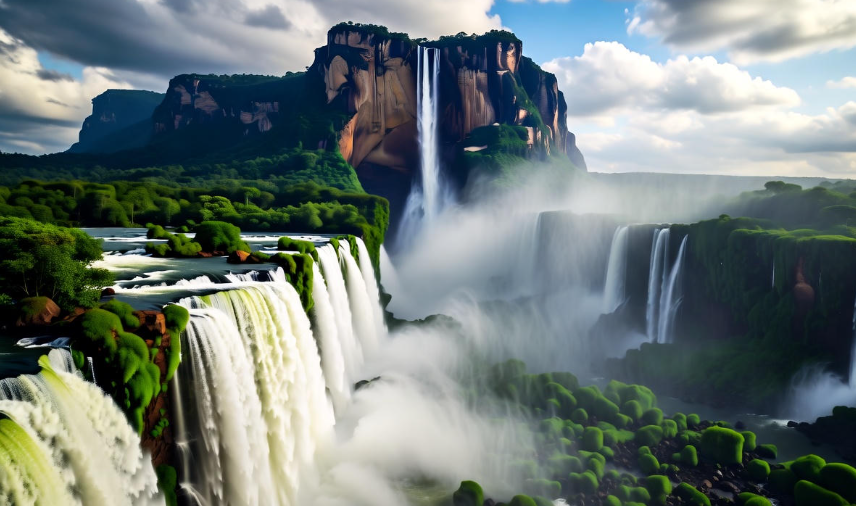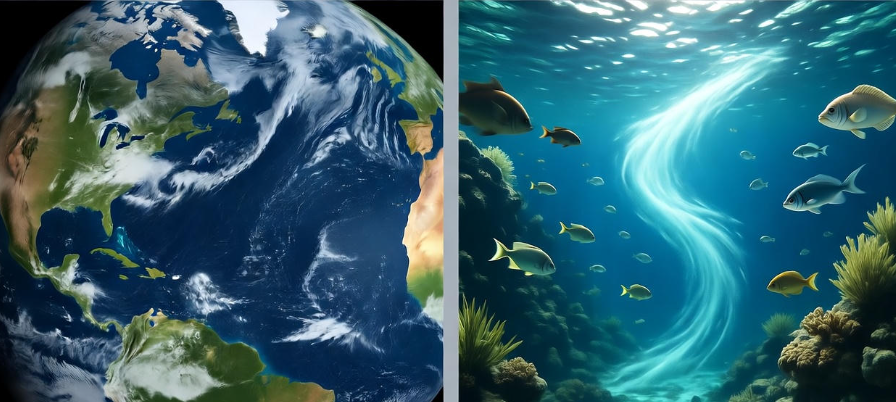Earthquakes are one of nature’s most unpredictable and powerful forces. They can strike without warning, shaking the ground, toppling buildings, and changing landscapes in seconds. Around the world, some areas are far more prone to earthquakes than others — not by chance, but because of the Earth’s structure itself.
Let’s take a deep, human look into where these deadly zones are, why they exist, and how people live and survive in them.
Understanding Why Earthquakes Happen
Before we dive into the world’s danger zones, it helps to understand why earthquakes even occur. The Earth’s crust is not a single solid shell — it’s made up of large pieces called tectonic plates. These plates float slowly on molten rock beneath the surface.
Sometimes they crash into each other, slide past, or pull away — and that’s where all the action happens. The energy released during these movements travels through the ground as seismic waves, which we feel as an earthquake.
Here’s a simple table that shows how plates interact and what usually happens:
| Plate Movement Type | Description | Example Region |
|---|---|---|
| Convergent Boundary | Plates collide and one slides under another | Japan, Indonesia |
| Divergent Boundary | Plates move apart | East Africa, Iceland |
| Transform Boundary | Plates slide sideways past each other | California (San Andreas Fault) |
When these massive plates grind or collide, the stress that builds up releases violently — that’s the “boom” moment we know as an earthquake.
The Pacific Ring of Fire
If you were to look at a map of the Pacific Ocean, you’d see a ring-shaped zone surrounding it. This is called the Ring of Fire, and it’s home to about 75% of the world’s volcanoes and 90% of its earthquakes.
It’s not just a name — this ring truly “fires up” the planet.
Countries along this zone include Japan, Indonesia, New Zealand, Chile, the Philippines, and parts of the U.S. like Alaska and California. These regions are constantly shaking because the Pacific Plate is pushing, colliding, and sliding under other plates all around its border.
People who live in these areas are used to small tremors, but once in a while, the big ones hit — the kind that make history.
Japan – The Land of Constant Shakes
Japan sits right where four tectonic plates meet — the Pacific, Philippine, Eurasian, and North American plates. That’s like living at a crossroads of geological chaos.
The country faces hundreds of small earthquakes every year, and some of them turn disastrous. The 2011 Tōhoku earthquake, for example, was a magnitude 9.0 monster that caused a deadly tsunami and the Fukushima nuclear disaster.
Despite all that, Japan has become a world leader in earthquake-resistant engineering. Buildings there can sway instead of collapse. The people are trained for emergencies from a young age. It’s a country that learned to live with danger — and to fight back intelligently.
Indonesia – Between Two Powerful Plates
Indonesia lies between the Australian Plate and the Eurasian Plate. This makes it a hotspot for both earthquakes and volcanic eruptions.
The region around Sumatra and Java is especially active.
One of the most tragic events in modern history happened here — the 2004 Indian Ocean earthquake, measuring 9.1 magnitude. It triggered a massive tsunami that struck 14 countries and killed over 230,000 people.
This single event changed how the world monitors tsunamis. Today, Indonesia has early warning systems and improved evacuation routes. But because the plates keep pushing, the risk never goes away.
Turkey – Where Continents Collide
Turkey lies on the boundary of the Anatolian Plate, squeezed between the Eurasian and Arabian plates.
This pressure makes it one of the most earthquake-prone countries in Europe and Asia.
In 1999, the Izmit earthquake killed over 17,000 people. More recently, in 2023, another powerful quake struck southern Turkey and northern Syria, leaving tens of thousands dead.
The country’s fault line, called the North Anatolian Fault, is long and dangerous. It runs right under heavily populated areas — including Istanbul. Scientists believe another major earthquake could strike there within decades.
California, USA – The San Andreas Fault
If you’ve ever heard of “The Big One,” it’s referring to California’s fear of a massive earthquake. The San Andreas Fault stretches over 1,200 kilometers, separating the Pacific Plate and the North American Plate.
California experiences frequent smaller quakes, but the major concern is a rupture that could reach magnitude 8 or more. Cities like Los Angeles and San Francisco are especially vulnerable due to dense populations and older infrastructure.
Despite advanced technology and strict building codes, experts warn that preparation is still key. Californians regularly practice “Drop, Cover, and Hold On” drills — because in this state, it’s not if the big quake comes, but when.
Chile – Shaken but Standing Strong
Chile might just be the toughest country when it comes to earthquakes. Located along the Nazca and South American plate boundary, Chile experiences some of the strongest quakes ever recorded.
In 1960, Chile faced the world’s largest earthquake — a staggering magnitude 9.5. The quake and the tsunami that followed caused widespread destruction across the Pacific.
What’s remarkable is how well Chile has improved since then. Its modern buildings are built to “dance” with the ground rather than fall apart. The government runs national drills, and citizens are well-educated about what to do when the earth starts moving.
Nepal – The Himalayan Shakes
When you think of the Himalayas, you imagine beautiful mountains — not earthquakes. But those same mountains were formed by the collision of the Indian and Eurasian plates. This collision continues even today, causing frequent earthquakes in Nepal and northern India.
In 2015, a 7.8 magnitude earthquake struck Nepal, flattening villages and killing nearly 9,000 people. The shaking was so strong that it could be felt as far as Bangladesh and China.
Because of its geography and older buildings, Nepal remains extremely vulnerable. Yet the people there have shown incredible strength and resilience, rebuilding again and again.
Mexico – The Shaking Heart of North America
Mexico sits right above three tectonic plates: the Cocos, North American, and Pacific plates. The movement among these plates makes it one of the most seismically active regions in the Western Hemisphere.
The 1985 Mexico City earthquake (8.1 magnitude) devastated the capital, collapsing hundreds of buildings. Interestingly, the city’s soft soil — once a lake bed — amplifies shaking.
Modern Mexico has made big changes since then, introducing strict construction codes and one of the world’s best earthquake early warning systems, called SASMEX. Sirens can alert people seconds before a quake hits, giving just enough time to seek cover. ⏰
New Zealand – On the Edge of Two Worlds
New Zealand is split between the Pacific and Australian plates, which makes it a land of both beauty and danger. Earthquakes are frequent, but the one in Christchurch (2011) left a deep mark.
That 6.3 quake destroyed much of the city and killed 185 people.
The country has since rebuilt with stronger materials, flexible designs, and new laws that require even small towns to follow earthquake safety rules. The people of New Zealand, like Japan and Chile, have learned that living with nature’s power means preparing — not ignoring it.

Iran – The Silent Danger in the Middle East
Iran is crossed by several major fault lines due to the collision between the Arabian and Eurasian plates. Because of this, powerful quakes are common.
The Bam earthquake in 2003 killed more than 26,000 people and destroyed a historic city.
Many Iranian towns still have old mud-brick houses, which collapse easily during shaking. Despite this, awareness and preparedness are growing, with more schools teaching quake safety to children.
-
️ You’ll also love this: How Satellites Make Maps More Accurate Today
Other Dangerous Earthquake Zones
Here are some additional regions that face frequent or severe earthquakes:
| Country/Region | Main Fault or Zone | Last Major Earthquake |
|---|---|---|
| Pakistan | Chaman Fault | 2005 Kashmir quake (7.6) |
| Alaska, USA | Aleutian Subduction Zone | 1964 (9.2 magnitude) |
| Haiti | Enriquillo–Plantain Garden Fault | 2010 (7.0 magnitude) |
| Greece | Hellenic Arc | 1956 Amorgos (7.7 magnitude) |
| China | Longmenshan Fault | 2008 Sichuan (7.9 magnitude) |
Each of these regions lives under constant risk. Some have developed strong safety cultures, while others still struggle with weak infrastructure and limited resources.
Can Earthquakes Be Predicted?
Here’s the truth — no, not yet. Scientists can estimate where earthquakes are most likely to happen, but not when.
There are no reliable ways to predict the exact date or time. However, with the help of satellite data, sensors, and AI-based models, we’re getting better at detecting early signs and issuing faster warnings.
Earthquake-prone countries also rely on building codes, public drills, and education to reduce deaths and damage when quakes do strike.
How People Can Stay Safe
Here’s a simple but life-saving checklist if you live in or visit an earthquake zone:
✅ Always know safe spots in your home — under sturdy tables or against inside walls.
✅ Keep an emergency kit (food, water, flashlight, radio).
✅ During shaking: Drop, Cover, and Hold On.
✅ After it stops, move carefully, and avoid damaged buildings or power lines.
✅ Stay calm — panic often causes more harm than the shaking itself.
A Glimpse of Hope
Even in the most dangerous earthquake zones, people continue to build, dream, and thrive. Humans have an amazing ability to adapt. Every new disaster teaches us lessons — how to build better, react faster, and respect the planet we live on.
The ground beneath us might move, but our will to stand strong doesn’t.
FAQs About Earthquake Zones
Q1. Which country has the most earthquakes in the world?
Japan and Indonesia experience the highest number of earthquakes every year due to their position on the Pacific Ring of Fire.
Q2. Can animals really sense earthquakes before they happen?
Some animals behave strangely before quakes — barking, running away, or acting restless — but there’s no scientific proof yet that they can predict them.
Q3. What is the safest place during an earthquake?
The safest place indoors is under a strong table or desk. Stay away from windows, mirrors, and heavy furniture that could fall.
Q4. How do scientists measure earthquakes?
They use a device called a seismograph, and the magnitude is measured on the Richter scale or the Moment Magnitude Scale (Mw).
Q5. Which was the strongest earthquake ever recorded?
The 1960 Chile earthquake, with a magnitude of 9.5, holds the record for the most powerful quake in history.
Final Thoughts
Earthquakes remind us that we live on a living, breathing planet. The ground may seem solid beneath our feet, but it’s always in motion.
Knowing where the most dangerous earthquake zones are — and how to stay prepared — can make the difference between tragedy and survival.
No one can stop the Earth from moving. But with science, awareness, and unity, we can move forward safely together.




